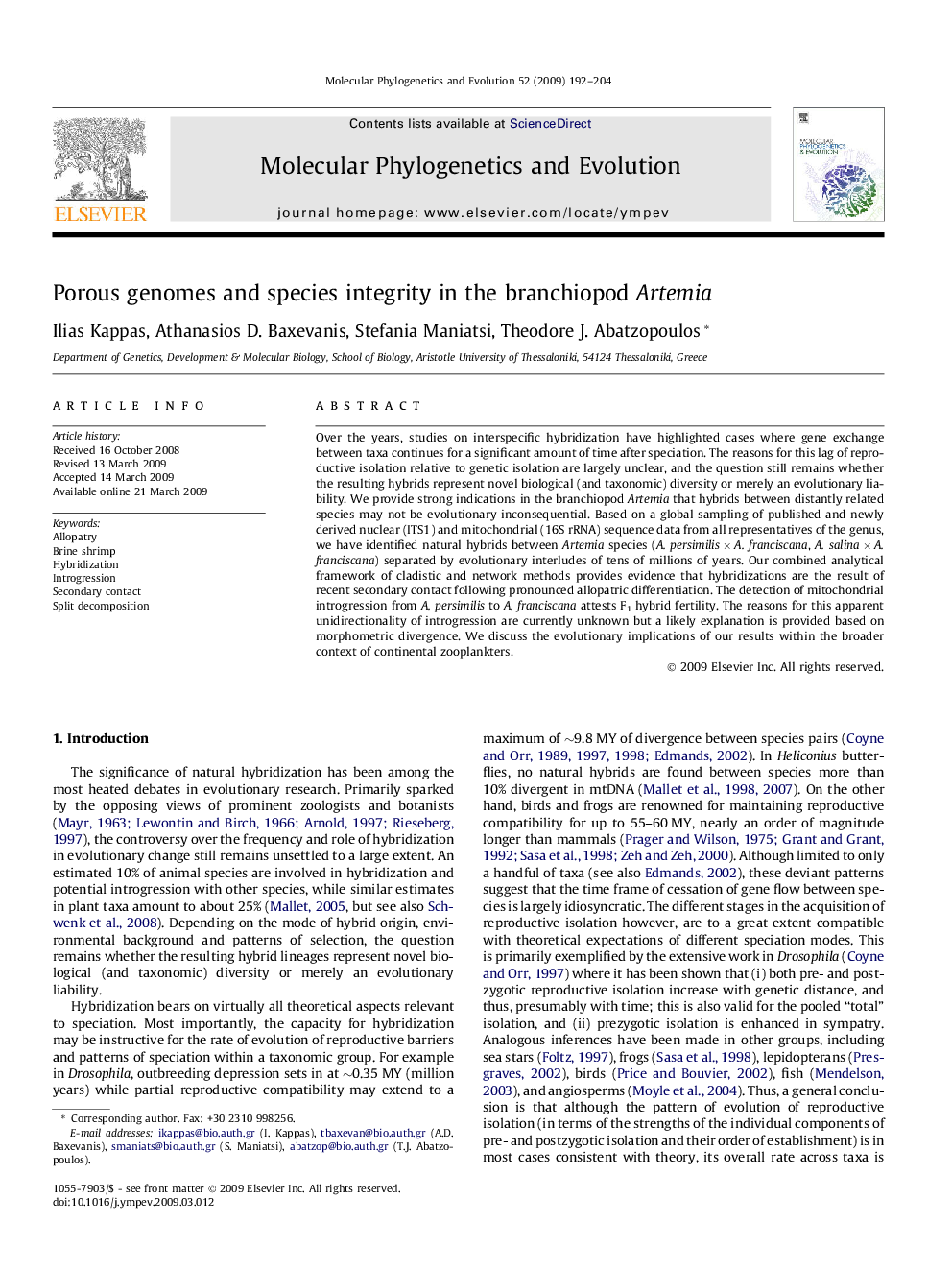| Article ID | Journal | Published Year | Pages | File Type |
|---|---|---|---|---|
| 2834913 | Molecular Phylogenetics and Evolution | 2009 | 13 Pages |
Over the years, studies on interspecific hybridization have highlighted cases where gene exchange between taxa continues for a significant amount of time after speciation. The reasons for this lag of reproductive isolation relative to genetic isolation are largely unclear, and the question still remains whether the resulting hybrids represent novel biological (and taxonomic) diversity or merely an evolutionary liability. We provide strong indications in the branchiopod Artemia that hybrids between distantly related species may not be evolutionary inconsequential. Based on a global sampling of published and newly derived nuclear (ITS1) and mitochondrial (16S rRNA) sequence data from all representatives of the genus, we have identified natural hybrids between Artemia species (A. persimilis × A. franciscana, A. salina × A. franciscana) separated by evolutionary interludes of tens of millions of years. Our combined analytical framework of cladistic and network methods provides evidence that hybridizations are the result of recent secondary contact following pronounced allopatric differentiation. The detection of mitochondrial introgression from A. persimilis to A. franciscana attests F1 hybrid fertility. The reasons for this apparent unidirectionality of introgression are currently unknown but a likely explanation is provided based on morphometric divergence. We discuss the evolutionary implications of our results within the broader context of continental zooplankters.
